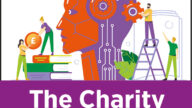AI (Artificial Intelligence) Hub
Fundraising in the AI era: Insights from the 2025 Status of UK Fundraising Report
Check out this blog from the team at Blackbaud on fundraising with AI.
As the UK nonprofit sector navigates a landscape of economic uncertainty, rising operational costs, and evolving donor expectations, one trend is emerging as a game-changer: the adoption of artificial intelligence (AI). Blackbaud Institute’s latest research report, the Status of UK Fundraising 2025: A Benchmarking Report for the AI Era, reveals a sector in transition—embracing digital tools, experimenting with AI, and cautiously optimistic about the future. This eighth edition of the annual report is based on a survey of 550+ nonprofit professionals who took part in an online survey conducted between 27th January and 24th February 2025.
AI adoption is accelerating
The research reveals that AI usage in UK fundraising has surged from 57% in 2024 to 77% in 2025, and most participants share they feel positively about AI use in the sector, at 70%. Most nonprofits are leveraging generative AI for content creation—drafting newsletters, social media posts, and reports. A much smaller group is exploring the huge potential of predictive AI for donor behaviour forecasting and natural language processing for chatbots and virtual assistants.
While the increased AI adoption poses vast new opportunities, the report also highlights a critical gap between accelerated adoption, and AI policy development and strategic integration. Only 16% of organisations share that they have an AI policy in place, despite 98% expressing concerns about AI risks such as misinformation, data security, and bias. While policy development has more than doubled from last year when just 6% had a policy in place, mitigating risks related to AI and ensuring ethical use of the technology is critical.
Digital maturity shapes AI success
A statistical modelling technique was used to analyse and segment individual responses, and the report introduced four personas that are divided across two main research variables: digital maturity and AI. These personas are:
- Optimistic Adopters: Digitally mature AI users who are confident in the potential of AI, but also understand its sector applications and limitations
- Open-Minded Attempters: Digitally average AI users who are curious about AI but cautious about risks
- Tentative Testers: Digitally limited AI users who explore AI but are limited in the tools they have
- Hesitators: Digitally mixed individuals who are not using AI, often due to lack of resources or trust
Respondents reporting higher digital maturity are more likely to see AI as a strategic asset and use it for a broader range of tasks. These most digitally mature organisations are also key advocates for sector-wide AI guidelines. In fact, the research highlights the need for in-depth discussions around AI use in the nonprofit sector in the UK to help organisations understand how it can be used safely, and in a way that creates efficiencies and a return on investment.
AI’s impact on fundraising efficiency
For many, AI is already proving its value in streamlining processes and operations. From supporting content creation to enhancing donor segmentation, nonprofits are reporting improved efficiency and capacity. In fact, 66% of professionals believe AI will help their organisation become more efficient, up from 45% last year.
However, survey respondents also emphasised that AI was not replacing the human touch. Major giving, for example, remains deeply rooted in relationship-building. The impact of successful major donor and individual donor cultivation and relationship building can be significant, as non-profits increasingly compete for gifts. These contributions require an intentional strategy around cultivating and building relationships and personal connections—something AI can support but not replicate, according to those surveyed.
Balancing innovation with ethics
It is evident that the social impact sector is at a crossroads. While AI offers immense potential, it also introduces ethical and operational considerations. To harness innovation safely and successfully, the report offers various recommendations, including:
Having intentional, organisation-wide discussions around AI use
Developing clear AI policies to guide responsible use, or implementing it as part of an existing technology strategy that details tools and prompts that can be used:
- Investing in training to build internal expertise and understanding around AI and its applications and limitations in the sector
- Identifying what AI-powered tools are available to nonprofits as part of their CRM or donor management system
- Collaborating with tech vendors to explore additional AI capabilities, including predictive AI tools
- Maintaining human oversight to ensure AI enhances, not replaces, human judgment
What’s Next?
AI is not a passing trend—it is a transformative force reshaping how nonprofits engage supporters, manage data, and drive impact. AI has moved beyond experimental stages and is now used to advance strategies within the nonprofit sector. The potential of AI to enhance fundraising, donor management, and overall efficiency is immense. But to fully realise its potential, organisations must move beyond experimentation and toward intentional, ethical integration.
As the report concludes, “AI is here to stay.” The challenge now is to harness it wisely, balancing innovation with integrity, and technology with the human side of fundraising.
Want to learn more about AI in fundraising? Join Blackbaud’s ‘Understanding the Basics’ session at the DSC’s The Charity AI Conference on July 17th.


Social Media for Voluntary Organisations
Social media has become an increasingly important means of connecting with the world around us.
Aimed at small and medium-sized organisations that want to improve their social media engagement and reach, as well as those who are just starting out, this is essential reading for everyone involved in social media communications in the voluntary sector.